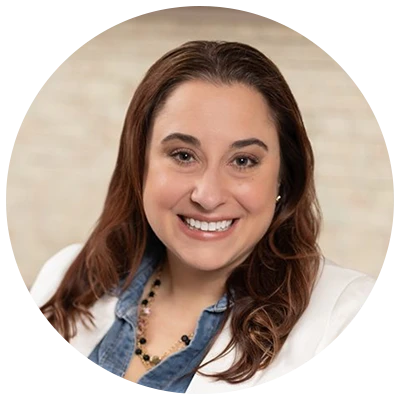Bridging the Gap: How Teachers, Researchers, and EdTech Can Work Together to Transform Science Learning

By Dr. Megan Conrad, Senior Researcher, ExploreLearning
At the 2025 annual meeting of NARST, a global organization of professionals committed to improving science teaching and learning through research, ExploreLearning hosted a pre-conference workshop to tackle a challenge that many of us in education know all too well: even though we all share the same goal of improving student learning, education research, classroom practice, and edtech innovation often operate in separate worlds.

Dr. Megan Conrad
Our session, Another Essential Partner We Need in the Mix: Building Lasting Connections Among Science Teachers, Researchers, and EdTech Innovators, focused on how we can work better together. Specifically, we explored how Research-Practice Partnerships (RPPs)—which bring teachers and researchers into collaboration—can be expanded to Research-Industry-Practice Partnerships (RPIPs) that also include edtech companies.

Dr. Stefani Stephenson
The session was hosted by ExploreLearning, and co-hosted by Dr. Stefani Stephenson, Senior Director of Educator Community Partnerships at Digital Promise, and Dr. William Penuel, Distinguished Professor of Learning Sciences and Human Development in the School of Education and Institute of Cognitive Science at the University of Colorado Boulder, both of whom are experts and advocates in the field of research-practice partnerships in education.
Why does this matter? Teachers deserve access to research-backed tools that are practical, scalable, and built with real classroom challenges in mind. For that to happen, researchers and edtech companies need to listen—really listen—to educators' and students' experiences.
Ensuring research and innovation work for teachers and students
Too often, education research stays locked behind academic paywalls or is discussed in conferences or journals that are difficult for teachers to access, let alone apply in their classrooms. At the same time, many educational products are developed for teachers, but not always with them.
Science education research has helped shape best practices for inquiry-based learning, hands-on engagement, and conceptual understanding. But these research insights don’t always make it into classrooms in ways that are accessible, easy to implement, or well-supported. When reflecting on their own experiences, teachers are frequently asking themselves:
- How do I apply this research to my students’ real needs?
- Why do the tools I use feel like they weren't made for the realities of my classroom?
- Why aren’t researchers and product developers asking teachers what actually works?
Designing with teachers, not just for them
Instead of true co-design, assumptions are made about what teachers need without fully understanding their daily realities, constraints, or the diverse contexts in which they work. The result? Research-based innovations that don’t always fit within existing classroom structures, and products that don’t fully align with the instructional challenges teachers actually face.
What’s missing is sustained, collaborative partnerships where teachers, researchers, and edtech developers work together over time, not just in one-off conversations, but through ongoing, iterative feedback loops that shape both research and product development with teachers at the center.
By reducing power disparities in these collaborations and ensuring that teacher voices guide both research and design, we can create tools that are:
Equitable – Reflecting the real needs of diverse classrooms
Teacher-Friendly – Designed for practical use, not just theoretical impact
Scalable & Effective – Grounded in research but built to work in real-world teaching environments
This is the shift in approaches to researching and building science edtech we explored in our workshop—supporting Research-Industry-Practice Partnerships (RPIPs) that ensure all stakeholders have an equal seat at the table and that products designed for the classroom are teacher-friendly, scalable, and effective.
“My participation in the session revealed strongly that we have so much more to learn about learning. And the strategies used are ones that I will implement in my teaching and research, including community engagement initiatives.”
–Professor Angela James, Science Education and Academic Leader of Community Engagement, University of KwaZulu-Natal, South Africa

Dr. Angela James
Inside the workshop: Supporting equitable research through collaboration
After setting the stage by sharing our information with the audience through panel discussions and case study reviews, we invited attendees to dive into a collaborative design activity that modeled what these partnerships can look like in action. Participants were grouped into small, cross-role teams to co-construct a mock research plan—one that started with science equity and context, not just academic questions or data sets.
Designing research questions through an equity lens
The activity began with a reflective empathy exercise focused on equity in STEM education. Each participant was asked to consider their own context and reflect on this question: Which student populations in your setting experience exclusion from STEM, and what challenges do they face in gaining equitable access? Dr. Stefani Stephenson, a co-presenter in our workshop, said, “It was important that we began from a place of empathy and understanding of real classroom challenges. We needed to ground ourselves in the needs of learners.” From there, groups explored the differences and commonalities across their experiences, surfacing shared barriers and localized insights that often go unaddressed in traditional research design.
Next came the heart of the activity: collaboratively generating research questions through a rotating worksheet method. Each participant started by jotting down their initial idea, then passed the worksheet to another group member, who added their own perspective, refinement, or critique.
A third round brought even more nuance, building a richer, more multidimensional proposal. This structure intentionally disrupted hierarchy—no one “owned” the idea, and everyone’s input carried equal weight. The process not only democratized research design, it also surfaced more creative and classroom-relevant ideas.

Jacqueline Dischereit
“Collaboration should be truly democratic—it’s not just about sharing research and ideas, but making them accessible and actionable for everyone involved.”
–Jacqueline Dischereit, PhD Student at the University of Göttingen, Germany
Shaping new perspectives on inclusive research
At the end of the session, each group shared reflections on both their research idea and their experience co-designing in this iterative, equity-centered way. This was a group of researchers with very different backgrounds, contexts, and research interests, who would probably never work together to draft a study in any other context. But they enjoyed the process and were excited to learn more about each group’s outcomes, sharing email addresses on the way out of the session to continue the conversation on their own. They left with new perspectives on the power of partnership and the value of stepping outside one’s usual role to imagine research that is truly collaborative, inclusive, and actionable.
Dr. Stephenson said, “It was really inspiring to see how engaged and excited the participants were as a result of our workshop. They really wanted to keep the conversation and the research ideas they generated going beyond the workshop. My hope is that they are sharing what they learned about iterative, equity-centered co-design with their colleagues across the world.”
Voices from the workshop
One of the most powerful aspects of the session was hearing from a diverse group of educators, researchers, and edtech professionals. Participants brought their perspectives grounded in both research and classroom experience. Their reflections reinforced a shared vision: that more democratic, inclusive approaches to collaboration can transform not only how we develop educational tools, but how we teach and learn.
“Democratic collaboration isn’t about giving everyone a seat at the table—it’s about ensuring they have a voice in shaping the agenda,” shared Jacqueline Dischereit, a doctoral student at the University of Göttingen in Germany. “Real collaborative progress happens when we listen, learn, and approach each other with empathy.”
She emphasized that powerful partnerships form when science teachers, researchers, and edtech designers come together not simply to share ideas, but to co-create knowledge and solutions.
Dr. Angela James, a Professor of Science Education and Academic Leader of Community Engagement at the University of KwaZulu-Natal in South Africa, echoed this sentiment:
“Specialists on their own can build a tower [but] collaboration amongst these specialists provides the intricate and intense dynamics for what is possible with teaching and learning, for great progress and achievements, ultimately. It is understanding the process that provides clarity on the possibilities for how the results are achieved.”
Collaboration starts with equity and accessibility
Both participants noted that education equity and accessibility must be central to how we collaborate. As Jacqueline put it, “It’s not just about sharing research and ideas, but making them accessible and actionable for everyone involved.” Dr. James added that the tools and strategies modeled during the workshop were ones she planned to bring back to her own teaching, research, and community work.
Together, their voices remind us that true collaboration can unlock more impactful and inclusive STEM education paths forward.
What’s next?
This workshop was just the beginning of a larger conversation. The real work happens when we take these ideas beyond the conference room and into sustained partnerships, where teachers, researchers, and edtech professionals work together long-term to shape research and innovation that is practical, equitable, and impactful, leading to real change for classrooms.
We invite you to stay connected and continue this work with us:
At the end of the day, teachers, researchers, and edtech companies all want the same thing: better learning experiences for students. The more we collaborate on equal footing, the more we can ensure that innovative, research-backed tools reach classrooms in ways that truly support teaching and learning.
Thanks to all who joined us at NARST 2025, we’re excited for what’s ahead!




